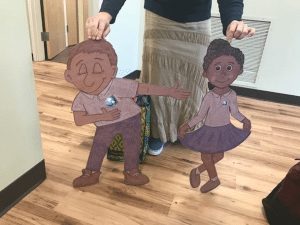Self Dressing for Your Toddler

Toddlers can learn to dress themselves earlier than you think. Not only are young children capable of self-dressing but they enjoy independence and are enthusiastic about learning to get themselves ready in the morning.
Like any new skill, getting dressed comes with some challenges at the start. Dressing or anything that a child learns necessitates a balance between making sure they can do it and pushing them to attempt things they previously could not do.
Since young children have both a low frustration tolerance and unrefined motor skills, an adult is needed to help facilitate the learning process. The adult’s job is to prepare the environment for self-dressing, isolate skills to practice, and ensure that the process of getting dressed is accessible to the young child.
Here are some tips to help you work on self-dressing for your toddler at home:
Set up a Dressing Station
Young children need a welcoming and accessible area to get dressed in. You could install a low bar in the child’s closet, or you could simply use command hooks on the wall at the child’s height. Clothing needs to be displayed so that everything is visible as well as reachable. A child-sized chair and a low mirror are also helpful.
Offer Just the Right Number of Choices
For a child just learning to dress, you might want to hang up just one full set of clothes. Choices can be distracting and confusing at first. However, options to pick from are also highly beneficial, keeping kids interested and preventing resistance. When your child is ready, consider putting out just two weather-appropriate options for each piece of clothing. You want to ultimately offer choices, since deciding what to wear is part of getting dressed, but know that offering too many can be overwhelming.
Stick to Clothing Your Child Needs Minimal Help With
While you’re working on self-dressing with your child, start by limiting clothing options to those which your child can put on (and take off!) independently. Velcro is a must when it comes to shoes. Leggings with an elastic waistband are another great selection.
Help Only as Much as Is Needed
Parents should assist when it is needed but take care to step back when help is not necessary. Never help if your child makes it clear he does not want your help. When it doubt, wait it out. In other words, allow your child the chance to figure something out and let him request help before you offer it. When you do help, just do the part that your child can’t do. For example, you might pull their shirt over their head, and let them tackle the sleeves on their own.
Use Homemade “Dressing Frames” for Practice
 You may have seen the Montessori dressing frames at your little one’s preschool. Support your child’s learning and interest with easy “dressing frames” for home. There is no need to go out and purchase any specific materials. Put clothes on and take clothes off of baby dolls or wrap an old shirt around a board (cardboard works) or within an embroidery hoop to make a practice board.
You may have seen the Montessori dressing frames at your little one’s preschool. Support your child’s learning and interest with easy “dressing frames” for home. There is no need to go out and purchase any specific materials. Put clothes on and take clothes off of baby dolls or wrap an old shirt around a board (cardboard works) or within an embroidery hoop to make a practice board.
When it comes to what to practice, snaps and Velcro are good starting points. Buttons and zippers are next, and starting with large-sized buttons is ideal. Laces and ties are advanced, and often not developmentally appropriate under the elementary years.
Remembering that Practical Life skills are a foundational part of the Montessori curriculum may help calm any fears about having to homeschool your children during these uncertain times. Self Care makes up a major part of what they need to learn in the toddler and preschool years so start there!


